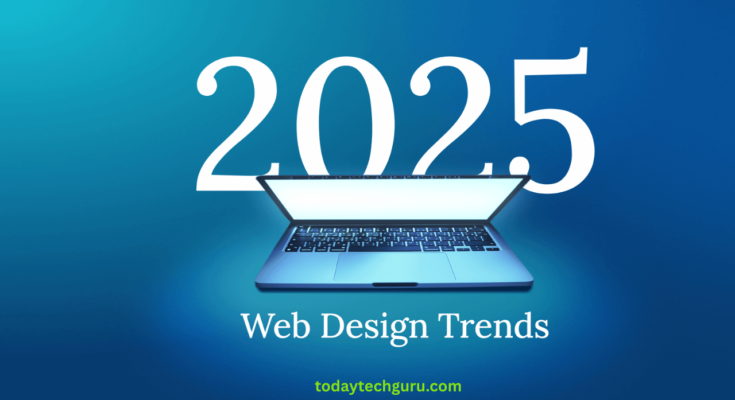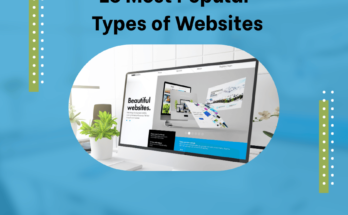Web design is evolving at a rapid pace, with new technologies and user expectations shaping the way websites are created and experienced. As we step into 2025, businesses and designers must stay ahead of the curve to remain competitive. This ultimate guide explores the web design trends in 2025 that will redefine digital experiences, ensuring aesthetics and functionality go hand in hand.
1. AI-Powered Design Automation
Table of Contents
Artificial Intelligence (AI) continues to revolutionize web design by automating processes and enhancing personalization. AI-driven tools will assist designers in generating layouts, color schemes, and typography that match user preferences. Platforms like Adobe Sensei and Wix ADI are already leveraging AI to make web design more accessible and intuitive.
2. Immersive 3D Elements and Augmented Reality (AR)
3D elements are becoming more refined and interactive, enhancing user engagement. Websites will incorporate AR features, allowing customers to visualize products in real-world settings before making a purchase. This trend is particularly beneficial for e-commerce, real estate, and fashion industries.
3. Dark Mode and Dynamic Themes
Dark mode has been gaining traction due to its sleek aesthetic and reduced eye strain. In 2025, websites will offer dynamic theme options, enabling users to switch between light and dark modes based on their preferences or time of day. This adaptability enhances user experience and inclusivity.
4. Minimalist and Clean UI Design
Simplicity remains a key trend in web design. Clean and clutter-free interfaces with ample white space will dominate, ensuring faster load times and a seamless user experience. This trend aligns with Google’s Core Web Vitals, emphasizing performance and usability.
5. Voice User Interface (VUI) Integration
With the rise of voice search and smart assistants like Alexa and Google Assistant, websites will increasingly incorporate Voice User Interfaces (VUI). Voice navigation and voice-based search functionalities will improve accessibility and user engagement, especially for visually impaired users.
6. Motion UI and Microinteractions
Motion UI and microinteractions will add subtle yet impactful animations to websites, making them more engaging. These elements help guide users, provide feedback, and enhance interactivity without overwhelming the experience.
7. Sustainable and Eco-Friendly Web Design
With environmental concerns on the rise, sustainable web design is a growing trend. Designers will optimize websites for energy efficiency by reducing server loads, using cleaner code, and implementing green hosting solutions.
8. Advanced Personalization and Adaptive Content
Personalization is no longer limited to e-commerce. In 2025, AI-driven adaptive content will ensure that users see tailored content based on their preferences, browsing history, and behavior. This will significantly enhance user engagement and conversion rates.
9. No-Code and Low-Code Development Platforms
The demand for no-code and low-code development is increasing, making web design more accessible to non-technical users. Platforms like Webflow, Bubble, and WordPress’s Gutenberg editor enable businesses to create stunning websites without deep coding knowledge.
10. Cybersecurity and Privacy-Focused Design
With data breaches becoming a significant concern, privacy-focused web design will be a top priority in 2025. Websites will integrate stronger security measures, GDPR compliance, and transparent data policies to build user trust.
11. Advanced Typography and Variable Fonts
Typography is evolving with the introduction of variable fonts, allowing for more responsive and visually appealing text on different screen sizes. Bold and creative typography will be a key design element, enhancing brand identity and readability.
12. Blockchain and Web3 Integration
The rise of Web3 technologies and blockchain-based solutions will impact web design in 2025. Decentralized websites and applications (dApps) will become more common, offering enhanced security, transparency, and user control over data.
13. Multi-Device and Cross-Platform Compatibility
As users interact with websites on various devices, from smartwatches to large screens, ensuring cross-platform compatibility is crucial. Responsive design will evolve to accommodate foldable screens and new device formats.
14. Gamification and Interactive Storytelling
Websites will leverage gamification techniques and interactive storytelling to keep users engaged. Features like quizzes, progress tracking, and reward-based interactions will enhance user experience, particularly in education and e-learning platforms.
15. AI Chatbots and Conversational Interfaces
AI-powered chatbots and conversational interfaces will become more sophisticated, providing seamless customer support and interactive user experiences. Websites will integrate natural language processing (NLP) to facilitate human-like conversations.
Conclusion
The web design trends in 2025 will focus on enhancing user experience, improving accessibility, and integrating advanced technologies. Businesses and designers who embrace these trends will stay ahead of the competition and deliver innovative, engaging digital experiences. Staying updated with these emerging trends will be crucial for creating modern, visually stunning, and high-performing websites.



